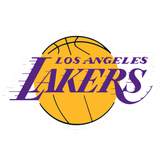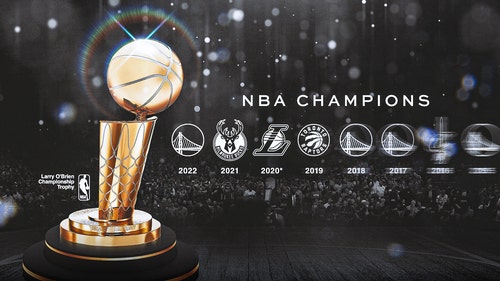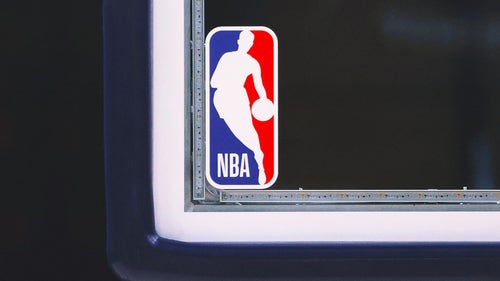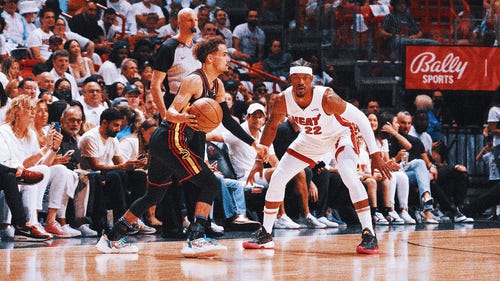
Los Angeles Lakers: 2017 Draft grades

Los Angeles Lakers
Jun 22, 2017; Brooklyn, NY, USA; Lonzo Ball (UCLA) is introduced by NBA commissioner Adam Silver as the number two overall pick to the Los Angeles Lakers in the first round of the 2017 NBA Draft at Barclays Center. Mandatory Credit: Brad Penner-USA TODAY Sports
The Los Angeles Lakers walked away from the draft with four players: a transcendent talent, two versatile forwards, and a competitive guard.
As Los Angeles Lakers fans recover from the D'Angelo Russell trade, one thing is certain — the backcourt now belongs to the second overall pick of the 2017 NBA Draft, Lonzo Ball.
This was the third consecutive year that the Lakers drafted at the second highest slot: Russell in 2015, already gone in trade; Brandon Ingram in 2016, seemingly a cornerstone piece under Magic Johnson; and this year's selection, Ball.
With the front office ready to once again make Hollywood a preferred basketball destination, clearing the decks for superstar talent in free agency, it will be their evaluation of teenage talent that will ultimately dictate the team's long-term success.
Will Russell, only 21 years old, blossom in Brooklyn and make the Lakers regret giving up on him? Will Ingram become the superstar player his talent suggests? Is Lonzo Ball the transcendent talent they believe him to be, or did the Lakers miss a chance to draft an eventual superstar in Josh Jackson or Jayson Tatum?
High-end talent is one thing, but good organizations also know how to find key role players in the draft. If the Lakers plan on stretching their cap space to sign a few blockbuster free agents, their ability to complement those players with young, inexpensive talent is critical.
General manager Rob Pelinka drafted three players 30th overall and later on Thursday. He might not need to hit a home run on any of those players, but he needs to hit a few singles or doubles. One or two of those players need to turn into rotation players, alleviating the need to fill out the roster through more expensive means.
The Lakers were able to add an additional draft pick by trading the 28th pick for the 30th and 42nd pick.
OFFICIAL: Lakers acquire Josh Hart and Thomas Bryant in trade with Utah. pic.twitter.com/CuZTlDiIie
— Los Angeles Lakers (@Lakers) June 23, 2017
Remember, Magic and Pelinka are new to this. It feels like they have been around forever, because they have — Magic a Laker icon and Pelinka as Kobe Bryant's agent. The draft is the first time we got to see both of them in talent evaluation roles. They made their mark by completing a few trades since taking over, but the draft is the first real indication of how they gauge talent and think about roster construction.
Pelinka made these comments to the media after the draft:
"The way that coach Walton wants to coach is he wants that ball moving around. We didn't look at ball-stoppers or guys that wanted to hold it for too long and make individual players. I think the great teams in today's game, the ball's moving around the perimeter and three-point shots are being made."
The Lakers' draft selections seem to match to that vision. Let's grade each of the picks.

Los Angeles Lakers
Brad Penner-USA TODAY Sports
No. 2 — Lonzo Ball
The inevitable is finally reality.
The Los Angeles Lakers selected Lonzo Ball with the second overall pick in the 2017 Draft.
After all of the rumors — they are going to take him, they aren't going to take him, they're going to trade the pick — the only thing coming between the Lakers and Ball on draft night was a bad phone connection, with the media conference line accidentally hanging up on Lonzo due to an incoming call.
Listen in as Lonzo Ball gets call from @MagicJohnson & Pelinka that he's going to @Lakers ???? https://t.co/wd3iSBuF6a #NBADraft pic.twitter.com/T5Gi6nUqNp
— NBA.com (@NBAcom) June 23, 2017
In Ball, the Lakers are hoping to reinvigorate Showtime basketball. The 6'6″ guard is best known for his feel for the game and passing abilities. At UCLA, 30 percent of his offensive possessions were in transition, scoring a respectable 1.12 points per each of those possessions, per Synergy data.
When he is not running down the floor, he is a lethal shooter, ranking in the 95th percentile of college players in spot-up shooting. His delivery might be funky, but the results are in rhythm.
Where Ball might have some difficulty adapting to the pro game is when things slow down and he is asked to facilitate pick-and-rolls in the half court offense. This speaks again to the questionable move by the Lakers to trade away D'Angelo Russell; he would have helped Ball flourish as a passer and shot-maker, while creating mismatches through pick-and-rolls himself. Russell led the Lakers in such possessions last season.
The Lakers' roster is fluid, so it's hard to predict who Ball's long-term backcourt mate will be. What makes Ball so valuable is his ability to both facilitate and play off the ball, making it easier on the Lakers to find a match, whether they pair him with a ball dominant guard or another shooter. Lonzo doesn't need the ball in his hands to be effective, he can score off catch-and-shoots and cuts to the basket. His passing abilities, meanwhile, are second to none.
Defensively, there is disagreement on Ball's potential, ranging from it being a major weakness in his game to expecting him to develop into an adequate defender. This is probably the most difficult thing to predict based on college performance, since the NBA requires a different skillset, athleticism, and scheme understanding to defend than in the college level.
In the end, the Lakers got their guy (Dad included), so they should be happy.
Draft Grade: A

Los Angeles Lakers
Jan 26, 2017; Salt Lake City, UT, USA; Utah Utes forward Kyle Kuzma (35) warms up prior to the game against the Oregon Ducks at Jon M. Huntsman Center. Mandatory Credit: Russ Isabella-USA TODAY Sports
No. 27 — Kyle Kuzma
As part of the return on the Timofey Mozgov/D'Angelo Russell trade, the Lakers used the 27th overall pick to select fleet-footed forward Kyle Kuzma.
Standing 6'9″ with a wingspan over seven feet, Kuzma possesses a modern skill-set that should suit him well in the NBA. He is big and he is quick; he can shoot threes; and he is comfortable handling the basketball.
Thinking of Kuzma and Thomas Bryant (the 42nd pick) together, the two forwards sort of offset each other's strengths and weaknesses. Both are tall and long, but while Kuzma lacks the post game of Bryant, he makes up for it in speed and perimeter play. The common denominator being that both big men can shoot, Kuzma more than Bryant.
???? from @kylekuzma's predraft workout with the Lakers: https://t.co/Aidj6TnrQF pic.twitter.com/Ev2COk50GV
— Los Angeles Lakers (@Lakers) June 23, 2017
After trading Lou Williams and D'Angelo Russell, and having Nick Young decline his player option, the Lakers are in desperate need of perimeter shooting. Kuzma increased his knack for three-point shooting in each of his three seasons at Utah. He can be a streaky shooter, but his shooting during the NBA Draft Combine really caught the attention of scouts.
The Lakers are following Luke Walton's vision of having players who can move the ball and shoot from the perimeter, regardless of position.
Draft Grade: B

Los Angeles Lakers
Mar 10, 2017; New York, NY, USA; Villanova Wildcats guard Josh Hart (3) reacts after making a basket late in the second half against the Seton Hall Pirates during the Big East Conference Tournament at Madison Square Garden. Mandatory Credit: Adam Hunger-USA TODAY Sports
No. 30 — Josh Hart
The Lakers made a lot of fans happy after trading down from the 28th pick by securing Josh Hart with the 30th pick.
Hart is a player who could make an immediate impact on the Lakers young roster next season. He played all four seasons of college at Villanova, maturing into a team leader and NCAA champion. Hart is a big guard who can shoot the basketball (again a key theme under Magic/Pelinka).
He finished his college career winning Big East Player of the Year, averaging 18.7 points, 6.4 rebounds and 2.4 assists per game. He attempted a career high 5.1 three-pointers in his senior season, connecting on 40.4 percent of them.
Just how good was Hart's Senior year?
Hart had the most Win Shares by a Big East player in a single-season since Kemba Walker in 2010-11 https://t.co/ztvxNnqUPI https://t.co/lASi1POPhP
— Basketball Reference (@bball_ref) June 23, 2017
Projecting his college numbers forward to the NBA, the advanced statistics love him, too.
The Lakers should also be excited about Hart's ability on the defensive side of the ball. He built a reputation in college as a tenacious defender who is able to guard multiple positions. His strength should help him translate his defensive game to the bigger NBA.
With Nick Young declining his player option, Josh Hart is a great replacement as a combo shooting guard who can also play along the wing as a forward.
Draft Grade: A

Los Angeles Lakers
Jan 15, 2017; Bloomington, IN, USA; Indiana Hoosiers center Thomas Bryant (31) shoots the ball while Rutgers Scarlet Knights center C.J. Gettys (34) defends in the first half of the game at Assembly Hall. Mandatory Credit: Trevor Ruszkowski-USA TODAY Sports
No. 42 — Thomas Bryant
The Lakers used their final draft pick (42nd overall) to select Thomas Bryant (I'm thinking they should put a T. in front of Bryant on his jersey) from Indiana.
T. Bryant gives the Lakers incredible length and reach. The 6'11" big man has a wingspan of 7'6″ and a standing reach of nearly 9.5 feet. Only Jonathan Jeanne has greater length and reach from this year's draft pool.
How Bryant capitalizes on that length is the question mark. In college, his post defense was in the pedestrian 31st percentile (see tweet below). Lacking foot speed, he also isn't much of a rim protector. He will need to develop that part of his game, using his size to make up for his lack of quickness.
On offense, Bryant brings another hook shot to the Lakers frontcourt (shout out to Ivica Zubac). In the post is where he is able to use his massive size to overpower opponents in single coverage, situations where he scored nearly a point per possession. He uses his long arms as a finisher around the rim, with 38 percent of his possessions from put-backs, cuts, rolls to the rim and rim runs, per Synergy.
Of course, shooting is an important weapon in his arsenal, and a key skill the Lakers sought in drafting him. Bryant made great strides over his freshman season in developing his jump shot. Granted, on limited possessions, but he ranked in the 99th percentile for spot-up efficiency. He also stepped back to take some additional threes, averaging nearly two per game last season and making 38.3 percent.
Bryant has some work to do to ensure he can stay on the floor against teams with faster frontcourts, but he has the natural size, finishing ability, and shooting touch to become a modern NBA big man.
Draft Grade: B-
More from Hoops Habit
This article originally appeared on





